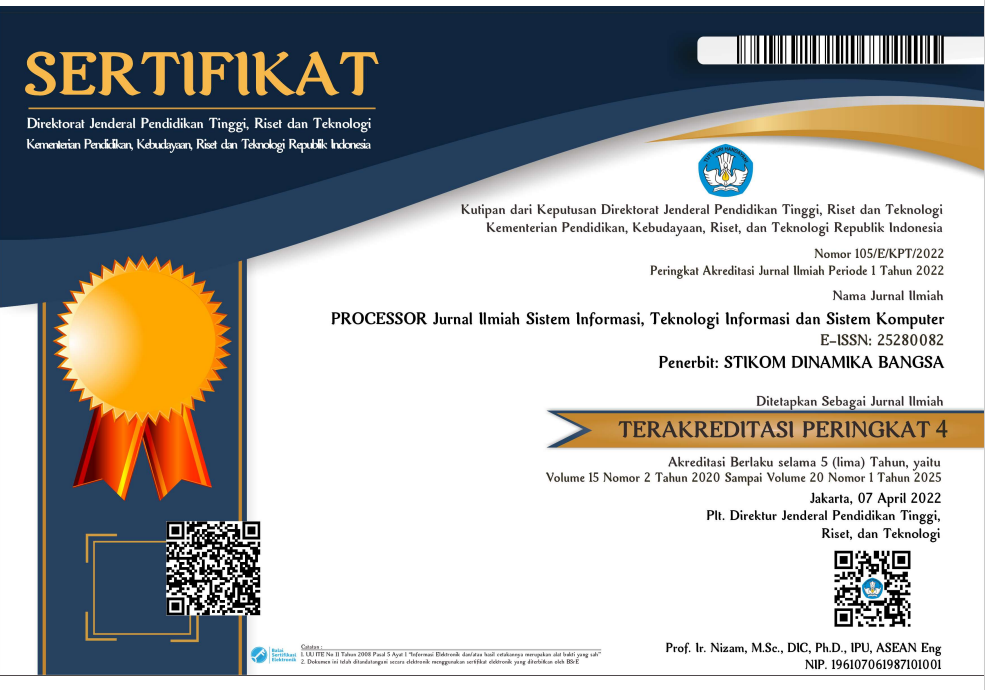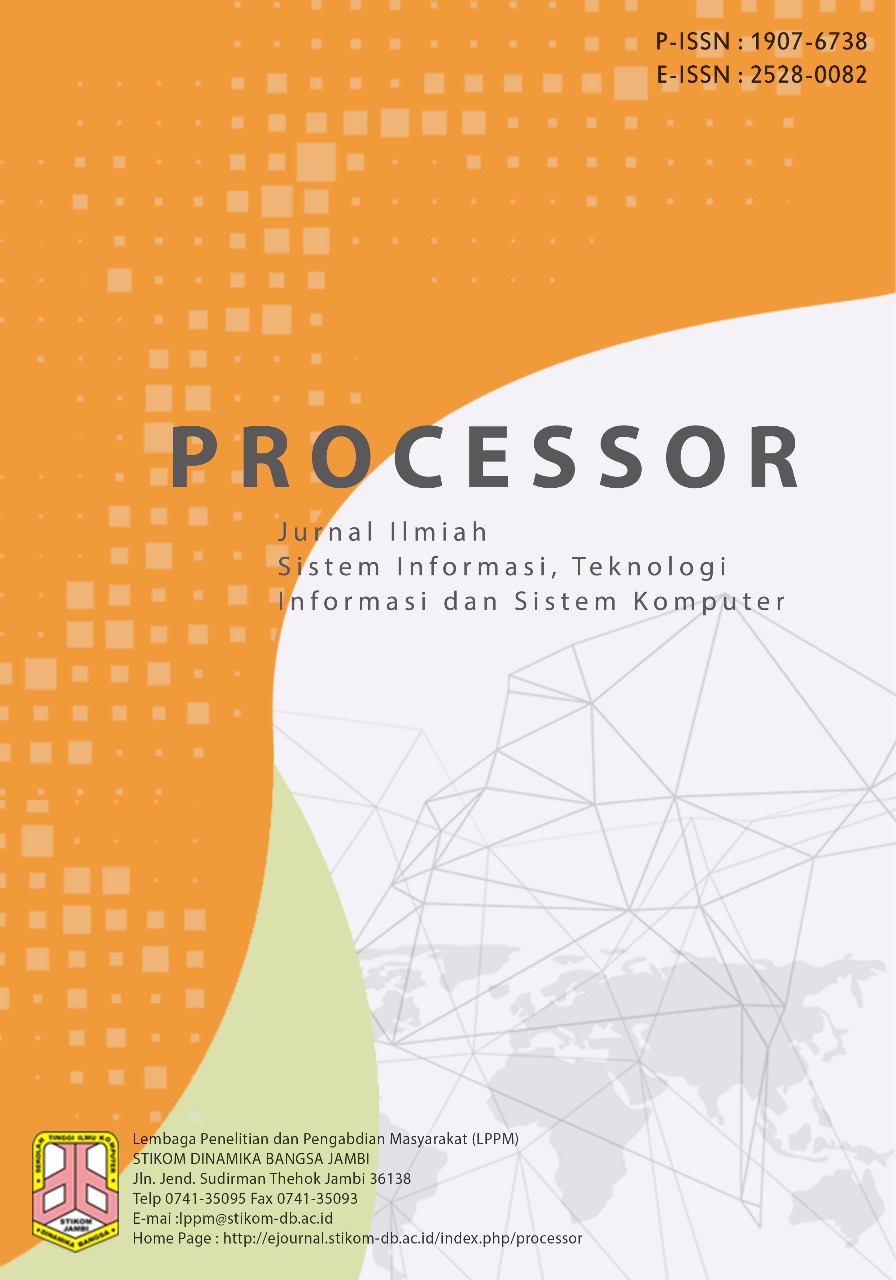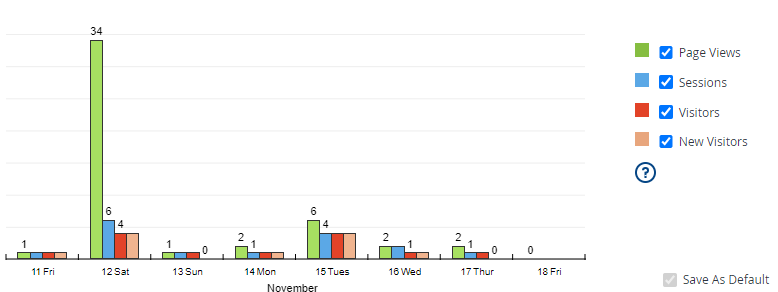Analisis Forensik Keamanan Data Pribadi pada Mode Privasi Browser Menggunakan Metode National Institute of Standards and Technology (NIST)
DOI:
https://doi.org/10.33998/processor.2025.20.1.2012Abstract
User privacy while browsing the internet has become a major concern, especially with the presence of the private mode feature in browsers, which is claimed to protect personal data. This study analyzes the extent to which private mode in Google Chrome and Mozilla Firefox browsers can safeguard personal data using the standard approach from the National Institute of Standards and Technology (NIST). Four simulation scenarios were conducted to evaluate the effectiveness of private mode in preventing user information from being stored. The research findings indicate that although private mode successfully prevents the storage of browsing history and user data on the hard disk, sensitive information such as accounts and passwords can still be accessed in memory (RAM) under certain conditions. These findings suggest that private mode is not entirely secure in protecting user privacy, particularly against attacks that exploit temporary data in RAM. The implications of this study highlight the need for further development in private mode security, both by browser developers and users who seek to enhance their personal data protection. This study also recommends additional strategies to be implemented more effectively in order to reduce the risk of data leakage when using private mode.
Downloads
References
Z. Song, “Personal data security and stock crash risk: Evidence from China’s Cybersecurity Law,” China J. Account. Res., vol. 17, no. 4, p. 100393, 2024, doi: 10.1016/j.cjar.2024.100393.
R. Yulia Andarini, P. Hendradi, and S. Nugroho, “Meningkatkan Keamanan Terhadap Sql Injection Studi Kasus Sistem Kepegawaian Bnn,” Indones. J. Bus. Intell., vol. 6, no. 1, 2023, doi: 10.21927/ijubi.v6i1.3161.
C. Hargreaves, A. Nelson, and E. Casey, “An abstract model for digital forensic analysis tools - A foundation for systematic error mitigation analysis,” Forensic Sci. Int. Digit. Investig., vol. 48, no. S, p. 301679, 2024, doi: 10.1016/j.fsidi.2023.301679.
S. Ebbers, S. Gense, M. Bakkouch, F. Freiling, and S. Schinzel, “Grand theft API: A forensic analysis of vehicle cloud data,” Forensic Sci. Int. Digit. Investig., vol. 48, no. S, p. 301691, 2024, doi: 10.1016/j.fsidi.2023.301691.
M. Okawa, “Synergy of on-surface and in-air trajectories: Exploratory analysis of forensic online signatures implementing lessons learned from biometrics,” Forensic Sci. Int. Reports, vol. 8, no. August, p. 100340, 2023, doi: 10.1016/j.fsir.2023.100340.
X. Fernández-Fuentes, T. F. Pena, and J. C. Cabaleiro, “Digital forensic analysis of the private mode of browsers on Android,” Comput. Secur., vol. 134, Nov. 2023, doi: 10.1016/j.cose.2023.103425.
X. Fernández-Fuentes, T. F. Pena, and J. C. Cabaleiro, “Digital forensic analysis methodology for private browsing: Firefox and Chrome on Linux as a case study,” Comput. Secur., vol. 115, Apr. 2022, doi: 10.1016/j.cose.2022.102626.
V. R. Kebande, S. O. Baror, R. M. Parizi, K. K. R. Choo, and H. S. Venter, “Mapping digital forensic application requirement specification to an international standard,” Forensic Sci. Int. Reports, vol. 2, Dec. 2020, doi: 10.1016/j.fsir.2020.100137.
B. Lerner, D. Passey, N. Sperber, and S. Knight, “OP043: The evolving attitude towards privacy and security of personal genomic data,” Genet. Med., vol. 24, no. 3, p. S369, 2022, doi: 10.1016/j.gim.2022.01.590.
I. Riadi, A. Yudhana, and M. Al Barra, “Forensik Mobile pada Layanan Media Sosial LinkedIn,” JISKA (Jurnal Inform. Sunan Kalijaga), vol. 6, no. 1, pp. 9–20, 2021, doi: 10.14421/jiska.2021.61-02.
D. Dunsin, M. C. Ghanem, K. Ouazzane, and V. Vassilev, “A comprehensive analysis of the role of artificial intelligence and machine learning in modern digital forensics and incident response,” Forensic Sci. Int. Digit. Investig., vol. 48, Mar. 2024, doi: 10.1016/j.fsidi.2023.301675.
V. H. V. Suhardjono, Arman Syah Putra, Nurul Aisyah, “Analysis of NIST Methods on Facebook Messenger for Forensic Evidance,” J. Innov. Res. Knowl., vol. 1, no. 10, p. 8, 2022, doi: 10.53625/jirk.v1i8.1122.
R. N. Bintang, R. Umar, and A. Yudhana, “Assess of Forensic Tools on Android Based Facebook Lite with the NIST Method,” Sci. J. Informatics, vol. 8, no. 1, pp. 1–9, 2021, doi: 10.15294/sji.v8i1.26744.
F. Yasin, Abdul Fadlil, and Rusydi Umar, “Identifikasi Bukti Forensik Jaringan Virtual Router Menggunakan Metode NIST,” J. RESTI (Rekayasa Sist. dan Teknol. Informasi), vol. 5, no. 1, pp. 91–98, 2021, doi: 10.29207/resti.v5i1.2784.
Imam Riadi, Abdul Fadlil, and Muhammad Immawan Aulia, “Investigasi Bukti Digital Optical Drive Menggunakan Metode National Institute of Standard and Technology (NIST),” J. RESTI (Rekayasa Sist. dan Teknol. Informasi), vol. 4, no. 5, pp. 820–828, 2020, doi: 10.29207/resti.v4i5.2224.
Imam Riadi, Rusydi Umar, and M. I. Syahib, “Akuisisi Bukti Digital Viber Messenger Android Menggunakan Metode National Institute of Standards and Technology (NIST),” J. RESTI (Rekayasa Sist. dan Teknol. Informasi), vol. 5, no. 1, pp. 45–54, 2021, doi: 10.29207/resti.v5i1.2626.
D. Julian and T. Sutabri, “Analisa Kinerja Aplikasi Digital Forensik Autopsy untuk Pengembalian Data menggunakan Metode NIST SP 800-86,” J. Inform. Terpadu, vol. 9, no. 2, pp. 136–142, 2023, doi: 10.54914/jit.v9i2.984.
A. Dan, P. Bukti, F. Digital, A. Media, S. Twitter, and M. Metode, “Analisa dan pencarian bukti forensik digital pada aplikasi media social twitter menggunakan metode national institute standard of technology,” pp. 24–33, 1979.
L. A. Gordon, M. P. Loeb, and L. Zhou, “Integrating cost-benefit analysis into the NIST cybersecurity framework via the gordon-loeb model,” J. Cybersecurity, vol. 6, no. 1, pp. 1–8, 2020, doi: 10.1093/CYBSEC/TYAA005.
N. Anwar, A. M. Widodo, B. A. Sekti, M. B. Ulum, M. Rahaman, and H. D. Ariessanti, “Comparative Analysis of NIJ and NIST Methods for MicroSD Investigations: A Technopreneur Approach,” Aptisi Trans. Technopreneursh., vol. 6, no. 2, pp. 169–181, Jul. 2024, doi: 10.34306/att.v6i2.407.
G. Horsman et al., “A forensic examination of web browser privacy-modes,” Forensic Sci. Int. Reports, vol. 1, no. October, p. 100036, 2019, doi: 10.1016/j.fsir.2019.100036.
Imam Riadi, Rusydi Umar, and M. I. Syahib, “Akuisisi Bukti Digital Viber Messenger Android Menggunakan Metode National Institute of Standards and Technology (NIST),” J. RESTI (Rekayasa Sist. dan Teknol. Informasi), vol. 5, no. 1, pp. 45–54, Feb. 2021, doi: 10.29207/resti.v5i1.2626.
T. Rochmadi, “Live Forensik Untuk Analisa Anti Forensik Pada Web Browser Studi Kasus Browzar,” Indones. J. Bus. Intell., vol. 1, no. 1, p. 32, 2019, doi: 10.21927/ijubi.v1i1.878























